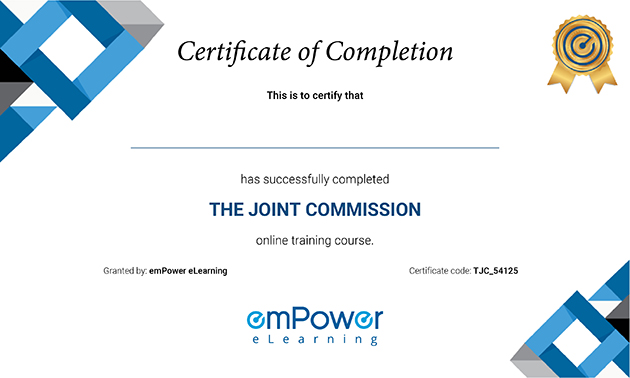Elevate Your Preparedness with emPower’s Online Fire Safety Patient Evacuation Training
Ensure workplace safety with convenient Online Fire Safety Patient Evacuation Training. Be prepared for emergencies efficiently and effectively.

Our Client

































What is fire safety patient evacuation training
Use the following content for reference. In case of a fire emergency, patients rely on your swift and informed decisions to keep them safe when they are unable to help themselves. So, you need to learn about the actions that you need to take in case of fire, and protect your patients. This comprehensive Online Fire Safety Patient Evacuation Training equips you with vital knowledge and skills necessary for the purpose.
As you go through this course, you’ll learn about different fire types, and how to fight them. You’ll also learn about the “RACE” guidelines for handling fire emergencies, and how to respond to a fire in your healthcare facility. The training will help you master evacuation procedures, from efficiently using fire alarms and extinguishers to navigating emergency exits seamlessly.
The Online Fire Safety Patient Evacuation training delves into critical aspects, including recognizing and mitigating fire hazards, along with essential fire prevention practices. Elevate your preparedness and contribute to a safer healthcare environment.
Course Description
| Category | The Joint Commission |
| Course Name | Fire Safety Patient Evacuation |
| Duration | 30 mins |
| Certificate Included | Yes |
| Languages | English |
| Course Type | Interactive online training |
| Narration | Yes |
| Format | LM-light, SCORM 1.2 |
| Supported Devices | Desktop/Laptop, Tablet, Phone |
| Last Updated | June 30, 2021 |
What you’ll learn
Discover workplace fire safety, including prevention strategies and actions to safeguard yourself and others. Explore identifying various fire types, preventing workplace fires, responding to specific fire emergencies, and mastering the proper use of portable fire extinguishers, selecting the right one for different fire types.
Curriculum
- Introduction to Fire Safety & Patient Evacuation Training
- What is Fire?
- Current Scenario in fire safety
- Different fire categories
- Fire safety standards for an HCF
- Fires in HCF
- Inspections in HCF
- Responding to a fire in HCF
- Protecting and evacuating patients
- Safe evacuation in case of a fire
- Alarm system
- Routes of exposures
- Fire extinguishers
- Types of extinguishers
- Portable hand-held extinguishers
- Water extinguishers
- CO2 extinguishers
- Dry chemical extinguishers
- How to use fire extinguishers
- When to use fire extinguishers
- Guidelines when using fire extinguishers
- Prevention of fire
- Hazards of fire
- Fire Prevention practices
- Fire safety guidelines
Who Should Attend?
- Healthcare facility staff
- Emergency response teams
- Administrators and managers in healthcare settings
- Maintenance and support staff in healthcare facilities
- Anyone involved in patient care within healthcare environments
Why emPower
100s of customers
- 14+ Years of experience in working with small to large businesses from different industries
- 95% customer retention
Customer Experience
- 24x7 dedicated support and toll free number
- 99%+ guaranteed uptime
Extremely Cost-effective
- As low as $0.99/user/yr
- We will match or better the price of your current LMS
Effective Courses
- Each course is 20-40 min long to ensure engagement with quizzes and certificate
- SCORM 1.2 Compliant
Implementation
- No setup costs
- We deploy your customized solution in less than 48 hours
Our Achievements
Here you can review some statistics about our Education Center
Related Courses
Start Your Certification Course Today
- Stage 1: Immediate Evacuation: From one room to another
- Stage 2: Lateral Evacuation: From an at-risk area to a safe zone
- Stage 3: Partial Evacuation: From one part of the building to another that is not under threat
- Stage 4: Full Evacuation: From within the building to an evacuation point outside the building
- Clear Communication: Ensure clear and concise communication during evacuations.
- Orderly Movement: Promote calm and organized movement to prevent panic.
- Safe Routes: Establish and follow safe evacuation routes.
- Assembly Points: Designate predetermined assembly points.
- Emergency Services Coordination: Coordinate with emergency services for effective evacuation.
- Partial Evacuation: Involves moving specific individuals or groups to safer areas within a facility.
- Full Evacuation: Requires the complete evacuation of an entire building or facility due to a more significant threat or emergency.
Evacuation methods include:
- Horizontal Evacuation: Shifting to a safer location, but on the same floor.
- Vertical Evacuation: Moving to another floor for safety.
- Total Evacuation: Leaving the building to the designated assembly point.
- Shelter-in-Place: Staying in a secure area within the building.

